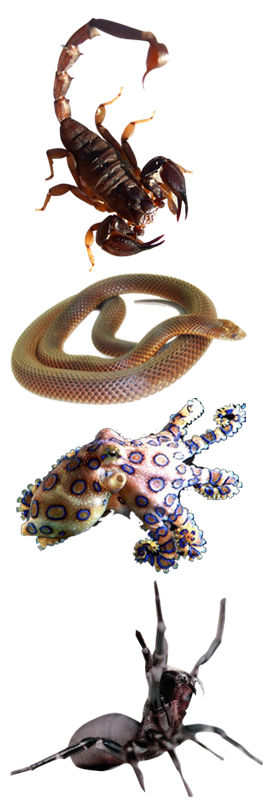|
First-Aid For Bites and Stings
First-Aid for Snakebite
The pressure/immobilisation First-Aid Method
For bites to leg
1. Apply a broad pressure bandage over the bite site as soon as possible. Keep the victim still. Try to reassure.
2. The bandage should be as tight as you would apply to a sprained ankle.
3. Extend the bandages as high as possible.
4. Apply a splint to the leg e.g. a piece of timber. Apply the splint to as much of the leg as possible.
Bites on Hand or Forearm
1. Bind to elbow
2. Use splint to elbow
3. Use sling to support arm. Bandages and splint should not be removed until the patient has reached medical care. The doctor will decide when to remove the bandages.
Don't cut or exercise the bitten area.
Don't apply arterial tourniquets.
Don't wash the bitten area. The snake involved may be identified by the detection of venom on the skin.
Bites to trunk
If possible apply firm pressure over the bitten area.
Bites to head or neck
No first aid for bitten area.
Land Creatures:
The Funnel Web Spider
The pressure/immobilisation method should be commenced as soon as possible and left in place until the patient is in hospital. Antivenom is now available.
Redback Spider
Do not use pressure/immobilisation method – pain relief may be obtained by applying ice and water in a plastic bag to affected area. Antivenom available – seek medical help immediately.
Ticks
The tick should be carefully removed as soon as possible. If the person is already ill, the pressure/immobilisation method should be used if possible to inhibit the movement of any toxic saliva which has been expressed during the removal of the tick.
Marine creatures which may cause death:
Blue Ringed Octopus
The pressure/immobilisation method is recommended. Prolonged artificial respiration and cardiac massage may be required. Antivenom not available.
Stonefish and other Stinging Fish
Do not restrict movement of the injected toxin. Pain relief is achieved by bathing the affected area in warm (but not scalding) water. Stonefish antivenom is available.
Box-Jellyfish (Sea Wasp)
Pour domestic vinegar (never methylated spirits or alcohol) over the adhering tentacles to inactivate them as soon as possible. Artificial respiration and cardiac massage may be required. Pressure/immobilisation method is recommended. Blue Bottle stings: wash with cold water and place ice pack on affected area. An antivenom is available.
|
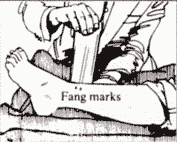
1. Apply a broad pressure bandage over the bite site as soon as possible (don't take off jeans as the movement of doing so will assist venom to enter the blood stream. Keep the bitten leg still!).
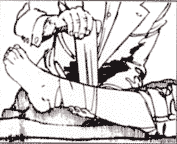
2. The bandage should be as tight as you would apply to a sprained ankle.
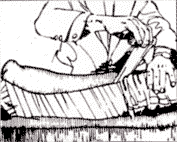
3. Extend the bandages as high as possible.
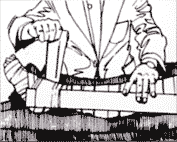
4. Apply a splint to the leg.
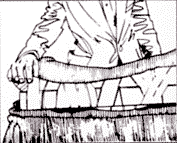
5. Bind it firmly to as much of the leg as possible.
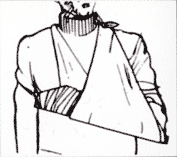
6. Bites on hand or forearm: bind to elbow with bandages. Use splint to elbow. Use sling.
|
